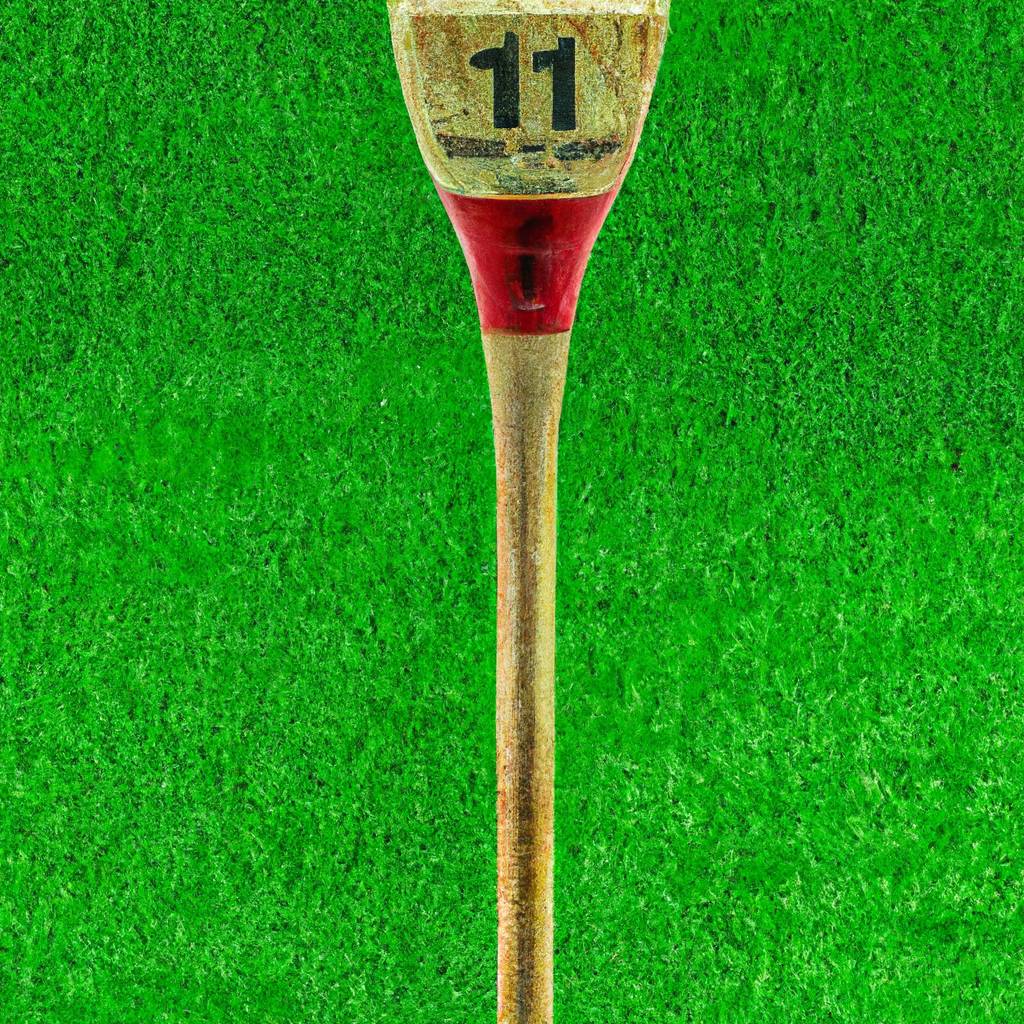We may earn money or products from the companies that may be mentioned in this post.
Have you ever wondered what exactly a golf tee is? Well, wonder no more! A golf tee, in simple terms, is a small peg that is used to elevate the golf ball off the ground for the initial shot on each hole. It provides golfers with stability and allows for a clean strike. This handy tool has been an essential part of the game for many years and is a must-have for any golfer. Join us as we explore the ins and outs of the golf tee and discover its importance in the world of golf.
What is a golf tee?

Definition
A golf tee is a small peg used to elevate a golf ball off the ground before striking it. It provides stability and a consistent height for the ball, ensuring a clean strike and minimizing ground interference. Golf tees are an essential tool in the game of golf, allowing players to have a more controlled shot and improve their overall performance on the course.
Purpose
The purpose of a golf tee is two-fold. Firstly, it provides stability to the golf ball by elevating it off the ground. This allows players to set up their shots with greater precision and confidence, knowing that the ball will remain in place during the swing. Secondly, the tee ensures a consistent height for the ball, which is crucial for achieving the desired trajectory and distance. By having a set height for the ball on each shot, golfers can develop a more consistent swing and improve their overall game.
Design
Golf tees typically have a cylindrical shape with a pointed end for easy insertion into the ground. The top of the tee is either flat or concave, providing a suitable surface for the golf ball to rest upon. This design allows for easy placement and stability of the ball, ensuring that it does not wobble or move during the swing. The materials used in the construction of the tee can vary, ranging from traditional wood to modern alternatives.

Materials
Golf tees can be made from various materials, each with its own set of advantages and disadvantages. Wooden tees are the most common and traditional type. They are often made from hardwood, such as birch or maple, which provides durability and longevity. Plastic tees have gained popularity in recent years due to their affordability and durability. They can withstand multiple hits without breaking, making them a cost-effective option. Rubber tees offer flexibility and cushioning, reducing the impact on the golf club and minimizing the risk of damage. Additionally, there is a growing trend towards using biodegradable materials for golf tees, contributing to more sustainable practices on the course.
Types
There are several types of golf tees available, each catering to the unique preferences and needs of golfers. The most common types include:
Wooden tees: These are the traditional tees made from wood. They are favored by many golfers for their natural aesthetics and durability. Wooden tees come in various lengths and can be reused multiple times.
Plastic tees: Plastic tees are widely used due to their affordability and durability. They are available in different lengths and colors, making them highly customizable and visible on the course.
Rubber tees: Rubber tees offer added flexibility and cushioning. They are often preferred by golfers looking for reduced club impact and improved consistency in their shots.
Step tees: Step tees have a graduated design with multiple height options. They allow golfers to easily adjust the tee’s height based on their preference and the club they are using.
Brush tees: Brush tees feature a brush-like top instead of a traditional flat surface. The bristles of the tee hold the ball in place, reducing resistance and enabling cleaner strikes.
Winter tees: Winter tees are specifically designed for playing golf on frozen ground or surfaces with limited grass. They provide stability and elevation, ensuring that the ball remains playable even in challenging weather conditions.
Standard Measurements
Golf tees come in various sizes, but there are standard measurements recommended by golf associations. The most common measurements for golf tees are as follows:
- Height: 2.75 inches – 4 inches
- Diameter: 0.5 inches – 0.6 inches
These measurements ensure that the tee provides adequate elevation for the ball while maintaining stability and durability during the swing.
Evolution
The evolution of golf tees can be traced back to the early days of the game. Initially, golfers used rudimentary tees made of rubber or branches. These early tees provided some elevation for the ball but lacked the stability and consistency of modern tees. In the 19th century, golfers started using wooden tees, which offered improved stability and longevity. The transition to wooden tees marked a significant advancement in tee design and set the foundation for future innovations. In the 20th century, plastic and rubber tees emerged as alternatives to wooden tees, providing additional durability and customization options for golfers.
Invention
The exact origin of the golf tee remains uncertain, but it is believed to have been invented by a golfer in the 19th century. As the game of golf evolved and became more popular, golfers sought ways to improve their shots and provide greater consistency. The invention of the tee allowed for a more controlled and precise strike of the ball, revolutionizing the game and enhancing the overall golfing experience.
Manufacturing Process
The manufacturing process of golf tees varies depending on the material used. For wooden tees, the process typically involves cutting and shaping hardwood into the desired dimensions. The wood is then sanded and smoothed to achieve a polished finish. Plastic tees are manufactured through injection molding, where molten plastic is injected into a mold and cooled to form the tee shape. Rubber tees are typically created using a combination of rubber compounds and molds, ensuring flexibility and durability in the final product. The manufacturing process for biodegradable tees may involve specialized techniques to incorporate natural materials and ensure environmental sustainability.
Price Range
The price range of golf tees can vary depending on the type and material used. Wooden tees are generally priced at $0.10 to $0.50 per tee, depending on the quality and brand. Plastic tees are more affordable, ranging from $0.05 to $0.20 per tee. Rubber tees, known for their durability and flexibility, are usually priced between $0.50 and $2.00 per tee. Factors such as brand reputation, material quality, and customization options can also influence the price range.
In conclusion, golf tees are an essential tool for golfers that provide stability, consistency, and precision in their shots. The design, materials, and types of tees have evolved over time, allowing for improved performance and customization options. Whether made from wood, plastic, rubber, or biodegradable materials, golf tees offer golfers the ability to elevate their game and enhance their overall experience on the course. With a wide range of options and price points available, golfers can choose the tees that best suit their preferences and improve their performance on the greens.
